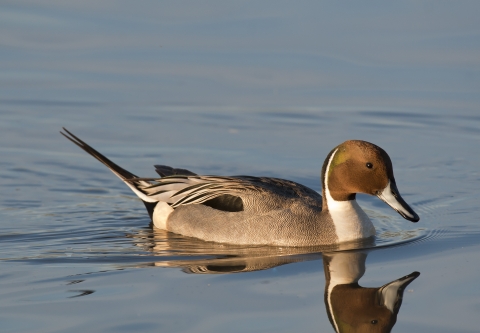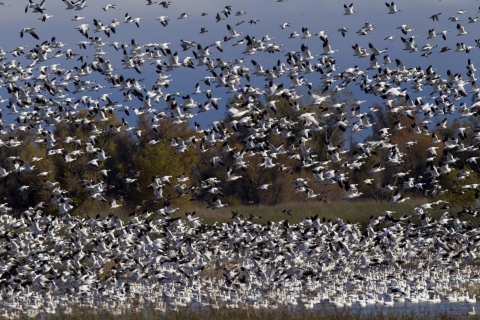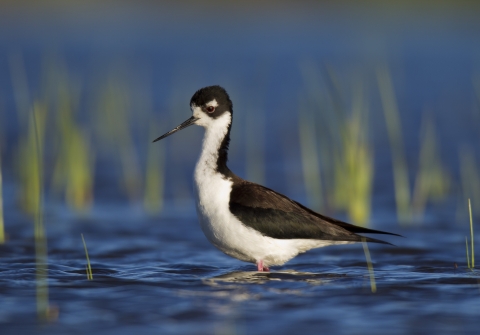Seasons of Wildlife
Several threatened, endangered, and sensitive species can be found on the Sacramento River National Wildlife Refuge including Chinook salmon, Valley elderberry longhorn beetle, yellow-billed cuckoos, Swainson's hawks, and bank swallows. The Sacramento River NWR is part of the Sacramento National Wildlife Refuge Complex, which provides nearly 70,000 acres of wetland, grassland, and riparian riparian
Definition of riparian habitat or riparian areas.
Learn more about riparian habitats for a wide array of waterfowl, shorebirds, raptors, waterbirds, songbirds, reptiles, and mammals. The Complex currently supports nearly 300 species of birds.
Species and Habitats <-- Click here to learn more about our species and habitats!
Wildlife Checklist <-- Click here to view our Wildlife Checklist
Fall (August - October)
Traveling south for the winter, flocks of shorebirds pass through in August and September as the water begins to flow back into the wetlands. Northern pintail are the first ducks to arrive, as early as mid-August, and signal the beginning of fall migration. White-fronted geese will follow in September. White geese (Snow and Ross's) begin to appear in October as fall migration kicks in to full swing.
Winter (November - February)
As the northern breeding grounds begin to freeze, large numbers of green-winged teal, American wigeon, northern shoveler, and American coot arrive in the Sacramento Valley. Joined by gadwall, mallard, bufflehead, and ruddy and ringed-neck ducks, duck and goose numbers peak on the Complex in November and December. In January, birds spread out across the valley as new habitat becomes flooded by winter rains. As February arrives, waterfowl numbers decrease as some begin to migrate north.
Spring (March - May)
As ducks and geese leave for their breeding grounds, shorebirds arrive. Sandpipers, dowitchers, dunlin, avocets, black-necked stilts and others probe the mudflats for food. Vernal pools become a display of colors. The riparian areas of Sacramento River NWR and Sutter NWR are alive with neotropical migrant songbirds.
Summer (June - August)
As the temperature creeps up in the 90's and 100's, most of the water disappears across the refuges. Staff are busy managing the habitats preparing for the next season. Herons, egrets, grebes, and some ducks remain to nest in the riparian trees and permanent ponds. Orioles, swallows, and flycatchers are found amongst the trees. Tricolored blackbird colonies set up in dense cattail territories. Bank swallow colonies can be seen if you float down the Sacramento River, their tiny burrows in the steep sandy banks buzzing with activity. Resident deer, blackbirds, jackrabbits, otters and western pond turtles are common sightings.




